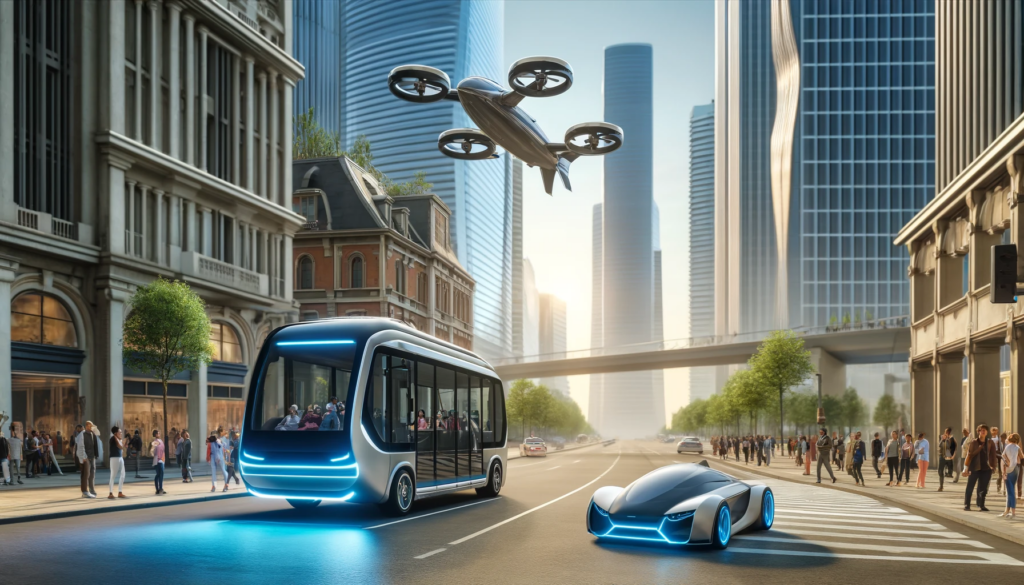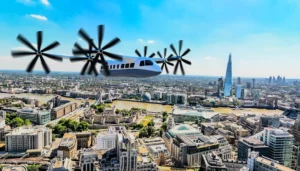
Differentiate from what? Tour bus operators now have more clarity on what mobility changes are coming
May 2nd, 2024
by Alex Bainbridge
Tour bus companies are integral to both the mobility and sightseeing sectors, connecting tourists with the people and place of unfamiliar destinations. By facilitating expansive exploration, they not only enhance the visitor experience but also thrive as profitable businesses.
But as readers of this blog know, mobility is changing. As such, when mobility changes, tour bus operating has to change also. The big questions remain:
- what IS changing? (beyond concepts that may never quite happen)
- how large will the change be?
- when can we expect this?
- what can a tour bus operator practically do today in order to be best positioned?
Without knowing these answers it is hard to inform strategies, leading to inaction.
In recent months the picture has started to become clear, hence this update.
The vehicle
We now have more clarity on what vehicles we have to use, or compete with.
Robotaxis
Autonomous vehicles that are available as short distance taxis, normally found in urban locations. For example this Zoox, from Amazon, will soon be operating experiences in Las Vegas:
This will compete with the “hop on hop off” business and likely become important for attraction ticketing retail.
Other players of note in the US include Waymo, currently scaling up San Francisco, Los Angeles, Austin, Phoenix.
Personally owned autonomous vehicles
For example a tourist hires an autonomous vehicle for 6 hours and goes out of city, e.g. visiting a castle or going on a wine tour. Car drives itself, making it an easy option for a tourist. This will compete with the “out of city” coach business, including multi-day.
Many are working on this, but Tesla in particular has a vision for a global fleet approach that makes sense to me:
Something I should clarify is that Tesla will be operating the fleet.
You can think of it as a combination of Airbnb and Uber meaning that there will be some number of cars that Tesla owns itself and operates in the fleet.
Then there’ll be a bunch of cars where they’re owned by the end user. That end user can add or subtract their car to the fleet whenever they want, and they can decide if they want to only let the car be used by friends and family or only by five-star users or by anyone. At any time they could have the car come back to them and be exclusively theirs like an Airbnb.
Source: Elon Musk – Tesla earnings call – end of March 2024, via The Motley Fool.
Flying cars & flying buses
I love these from Xpeng, available for 142,000 USD.
Or howabout eHang aerial sightseeing:
While in Bali, Sirius Aviation is working on a tourism based eVTOL network with 10 vehicles:
PARQ will develop tourist routes and infrastructure, not just in Bali, but on the numerous surrounding islands, enhancing the region’s economy and introducing brand new destinations.
Read more at Urban Air Mobility news.
Or howabout an eVTOL bus from Sora Aviation:
A typical 5 seat air taxi today might have a maximum dimension of 15 to 16 metres, that’s consistent with a small to medium helicopter. The 30-seater we’re developing has a maximum dimension of about 22 metres – so it’s bigger, but it’s not ridiculously bigger for the number of passengers it carries. One of our goals now is to engage with infrastructure developers and make them aware that these kinds of vehicles are on the way with very favourable economics and therefore their infrastructure requirements should be considered during vertiport design.
If you can go 100 miles in a five seat eVTOL, you can go 100 miles in a 30-seat eVTOL, you just carry a proportional amount of batteries.
Read more at eVTOL Insights.
The scale challenge
Sightseeing bus companies are used to being the big companies in a region, perhaps only matched in size by significant individual attractions. They operate high volume mainstream experiences and their daily problems revolve around operations due to their scale.
However existing operators have to understand that new mobility is about scale and current individual operators will transform from the largest in the sightseeing sector to the smallest in the mobility sector.
Hamburg
The vision is to have 10,000 autonomous vehicles in one city.
Didi
The vision is to have 1,000,000 robotaxis operated by Didi.
Tesla Cybercab robotaxi
As our fleet grows, we have 7 million cars going — 9 million cars going to eventually tens of millions of cars worldwide
Source: Elon Musk – Tesla earnings call – end of March 2024, via The Motley Fool.
PwC
The market potential of Shared Autonomous Vehicles (SAVs) is significant with up to 26.4 million SAV units expected by 2040.
Source: https://www.pwc.de/de/smart-mobility/die-entwicklung-von-shared-autonomous-vehicles.pdf
At this scale, who will online travel agents such as Viator or Expedia want to work with? Will it be the local tour operator with 50 autonomous vehicles? Even companies with a 1 million vehicle fleet will be considered table stakes for an online travel agent deal.
Summary
I gave a 20 minute presentation on this topic at ITB Berlin a few weeks ago.
Worth a watch as also covers experience design aspects of this transition, and some timeline tasks that tour bus operators need to be planning for immediately.
Timelines are now tight. (See video for details)
Thankfully tour bus companies ARE now beginning to work on their transition problem. Contact me (via Autoura) if you want to join them.
Image: OpenAI via ChatGPT

This content is protected by copyright. Link sharing is encouraged but duplication and redistribution is illegal



If you prefer to comment on LinkedIn, here is the thread: https://www.linkedin.com/posts/alexbainbridge_differentiate-from-what-tour-bus-operators-activity-7191740999935664129-PMeN